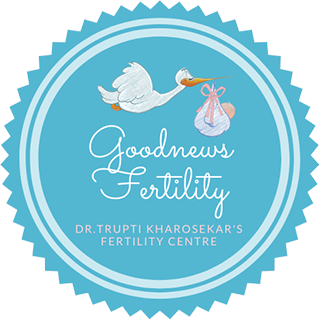Services
#Infertility Counseling
#Follicular Monitoring
#Evaluation of Male Partner
The principle diagnostic test to determine the extent to which the male partner contributes to a couple’s infertility is semen analysis. Semen analysis determines the volume of the ejaculate and the sperm count, percentage motility, and the percentage of spermatozoa with normal morphology according to strict criteria.
#Evaluation of Female Partner
#Intrauterine Insemination (IUI)
Why is it done?
Mild male factor infertility (subfertility)
Your partner’s semen analysis, one of the first steps in the medical assessment of infertility, may show below-average sperm concentration, weak movement (motility) of sperm, or abnormalities in sperm size and shape (morphology). IUI can overcome some of these problems because preparing sperm for the procedure helps separate highly motile, normal sperm from those of lower quality.
Unexplained infertility
IUI is often performed as a first treatment for unexplained infertility along with ovulation-inducing medications.
Endometriosis-related infertility
Cervical factor infertility
Your cervix, at the lower end of the uterus, provides the opening between your vagina and uterus. Mucus produced by the cervix around the time of ovulation provides an ideal environment for sperm to travel from your vagina to the fallopian tubes. But, if your cervical mucus is too thick, it may impede the sperm’s journey. The cervix itself may also prevent sperm from reaching the egg. Scarring, such as that caused by a biopsy or other procedures, can cause the cervix to thicken. IUI bypasses your cervix, depositing sperm directly into your uterus and increasing the number of sperm available to meet the awaiting egg.
Single Patent Tube
Selected cases of PCOD
The specific cause of PCOS is still unknown, the condition results in hormonal imbalances that curtail or prevent ovulation—the body’s process of producing and releasing eggs from the ovary. Women experience limited follicular development (follicles are small sac-like structures within the ovaries, and each follicle contains an egg). With limited follicular development, egg development will not occur. Clinically, the limited egg development may result in irregular ovulation or a complete lack of ovulation (anovulation), which can persist for months or even years. This ovulatory dysfunction is what actually causes infertility in these women.
Cases with Erectile Dysfunction
While ED doesn’t directly cause male infertility, they may have the same root causes and are often seen in conjunction with each other.
#In Vitro Fertilization (IVF)
In vitro fertilization (IVF) is a type of assisted reproductive technology (ART). It involves retrieving eggs from a woman’s ovaries and fertilizing them with sperm outside the body. This fertilized egg is known as an embryo. The embryo can then be frozen for storage or transferred to a woman’s uterus.
#Intracytoplasmic Sperm Injection (ICSI)
How the IVF/ICSI Treatment Process Works ?
Step 1 : Ovarian Stimulation
Step 2 : Patient Monitoring
Step 3 : Maturing Eggs
Step 4 : Egg Retrieval
Step 5 : Sperm Collection
Step 6 : Egg Fertilization
Step 7 : Embryo Transfer
Step 8 : Pregnancy Test

Are there any side effects or risks with IVF ?
Right After the Procedure
- In most cases, there is minimal discomfort with IVF, except for mild cramping. Other side effects may include:
- Minimal vaginal bleeding
- Mild bloating
- Mild cramping
- Breast tenderness
- Constipation
Common side effects from fertility medication
- Mood swings
- Hot flashes
- Headaches
- Abdominal bloating
- Abdominal pain
#Gamete Cryopreservation
With changing trends towards late marriages, delaying child birth, professional commitments etc, egg freezing and sperm banking are effective methods for fertility preservation.
These methods maximize fertility potential per retrieval cycle, providing a repository for individual’s eggs/sperms/embryos that may not exist elsewhere. Thus reproductive potential is not limited to reproductive years, but available as one manifests the need.
#Third Party Reproduction
- Opting for an egg donor
- Sperm donor
- Embryo donation or adoption
- Surrogacy



